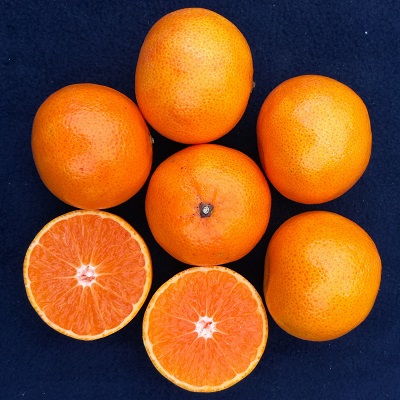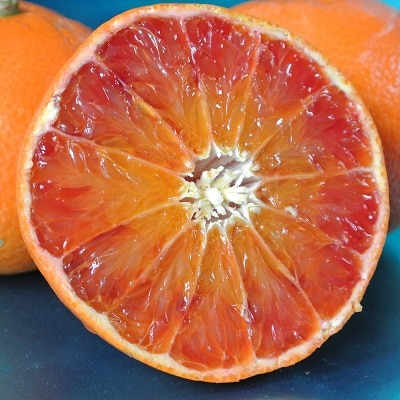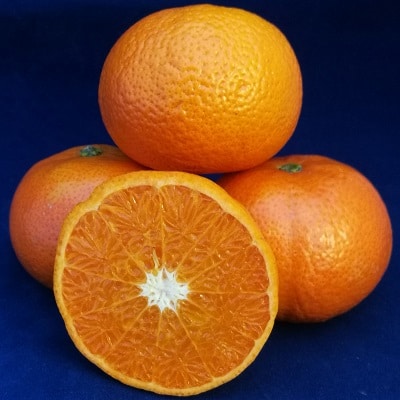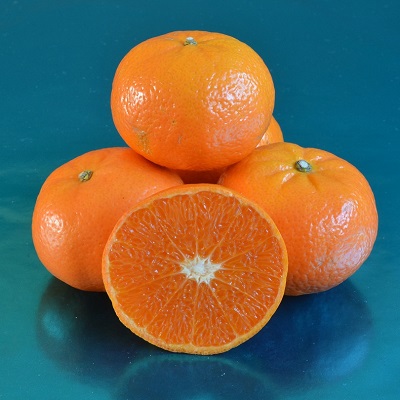Tangold (often marketed as Tango) is a late harvested, seedless mandarin. It has an excellent eating quality with great depth of flavour, a good acidity balance and high levels of sweetness. It is a medium sized fruit with very smooth rind, deep orange in colour and very easy to peel. The shape is deeply oblate and the flesh is fine textured with a high juice content.
The fruit is similar to Nadorcott (Afourer) and Murcott in appearance and quality, but is much more likely to be seedless.
Growers are attracted to Tangold because it is virtually seedless, and is pollen-sterile which means it will not cause seeds in neighbouring orchards.
Tangold is a lovely mandarin, easy to peel, sweet and with a good acid balance and depth of flavour. In the early season, Tangold can be quite tangy.
Quality Check:
- Green tinge on peel: no problem
- Puffy or soft fruit: avoid
- Fruit should be firm with a fairly tight peel
Good Fruit Guide Rating: *****
Names: Tangold; Tango.
Origin: The Nadorcott variety is the result of a chance cross-pollination of an unknown variety with Murcott Clementine. It was discovered in 1982 by El Bachir Nadori at an experimental station in Afourer, Morocco. The original discovery was a very seedy, though tasty fruit, but by 1988 a seedless version was being produced by isolating trees from cross pollination, which was then given the name Afourer.
Tangold is a product of the University of California Citrus Scion Breeding Program located at Riverside which has been pursuing seedless mandarin breeding for several decades. One aspect of the program utilised irradiation of buds from several common mandarin varieties to induce mutations to reduce the number of seeds in previously seedy mandarins. Tangold was developed from an irradiated selection of Afourer (Nadorcott/W. Murcott). It was first registered in 1992, released as budwood in 2006 in California and 2009 internationally, and patented (Plant Patent #17863) in 2007. The Tangold variety has been given Plant Breeders Rights in many citrus production countries.
Grown in: Tangold has become quite widespread to the extent that long marketing periods are now possible. The main plantings exist in Morocco, Portugal, Spain, California, Argentina, Peru, Australia, New Zealand and South Africa.
Harvest & Availability:
- January:
- February: Spain
- March: Spain
- April: Spain
- May: Spain
- June:
- July: South Africa, Peru
- August: South Africa, Peru
- September: South Africa, Peru
- October: South Africa, Peru
- November:
- December:
Websites:






Reviews
There are no reviews yet.